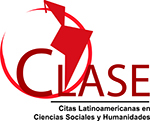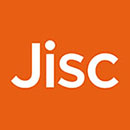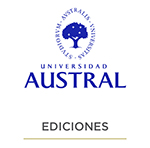Envíos
Lista de comprobación para la preparación de envíos
Todos los envíos deben cumplir los siguientes requisitos.
- El autor manifiesta que el manuscrito enviado es de su autoría, original e inédito y declara no tener conflicto de interés alguno.
- El envío no ha sido publicado previamente ni se ha sometido a consideración por ninguna otra revista (o se ha proporcionado una explicación al respecto en los Comentarios al editor/a).
- El archivo de envío está en formato Microsoft Word. Las imágenes están en formato TIF, PNG, AI, PS en alta resolución. Las tablas y gráficos están en formato Microsoft Excel.
- Siempre que sea posible, se proporcionan direcciones URL para las referencias.
- El texto está escrito en Times New Roman cuerpo 12, con interlineado 1,5; todas las ilustraciones, figuras y tablas se encuentran colocadas en los lugares del texto apropiados y se adjuntan también en archivo aparte.
- El texto se adhiere a los requisitos estilísticos y bibliográficos resumidos en las Directrices del autor/a, que aparecen en Acerca de la revista.
- El título, el resumen y las palabras clave están en español y en inglés.
- El autor ha leído atentamente la información contenida en esta página acerca de los términos y condiciones de la Licencia de Uso de los Derechos de Autor y la adhesión o aceptación automática que genera el envío de los trabajos para publicar con el alta de usuario y contraseña en el sistema.
- El autor ha borrado su nombre del texto y ha evitado autorreferenciarse.
- El autor ha eliminado la identificación personal de las propiedades del archivo de Microsoft Office.
- El autor declara que, en el caso de que sus resultados de investigación publicados en el artículo hayan sido financiados o cofinanciados con fondos públicos, ha depositado sus trabajos y datos primarios en repositorios institucionales para así cumplimentar lo requerido en la Ley 26899.
Artículos
Se publicarán artículos de investigación originales e inéditos, de todas las ramas del derecho, nacional y comparado, los cuales deben ofrecer aportes significativos al desarrollo de las distintas disciplinas jurídicas, proporcionando criterios de análisis e interpretación del derecho que resulten válidos y útiles para los lectores.
Análisis, crónicas y comentarios
Se publicarán análisis, crónicas y comentarios vinculados con la temática y alcance de la RJA y que el Consejo Editorial considere relevantes debido a que ofrecen aportes significativos o novedades para el ámbito de la investigación y divulgación jurídica. Asimismo, se incluirán reseñas de actividades académicas relacionadas con el campo del derecho que resulten de importancia para su difusión. Se aceptarán trabajos en cualquier idioma. En caso de que incluyan citas y referencias, deberán seguir las normas que se detallan más adelante.
Recensiones
Se publicarán recensiones de obras bibliográficas publicadas recientemente vinculadas con el campo del derecho. En ellas deberán consignarse los datos bibliográficos del libro que se revise: autor/es, año de publicación, título del libro, ciudad de publicación, editorial y número de páginas total del libro. En caso de que se reseñe un capítulo concreto dentro de un libro, es preciso añadir el título del capítulo y las páginas de inicio y fin de este.
Aviso de derechos de autor/a
Esta licencia permite copiar, distribuir, exhibir y representar la obra siempre y cuando se reconozca la autoría y se cite la obra de la forma adecuada. No se permite el uso comercial de la obra original ni la generación de obras derivadas.
Los autores garantizan a la Revista Jurídica Austral el derecho de ser la primera publicación del trabajo.
Declaración de privacidad
Los nombres y las direcciones de correo electrónico introducidos en esta revista se usarán exclusivamente para los fines establecidos en ella y no se proporcionarán a terceros o para su uso con otros fines.












































